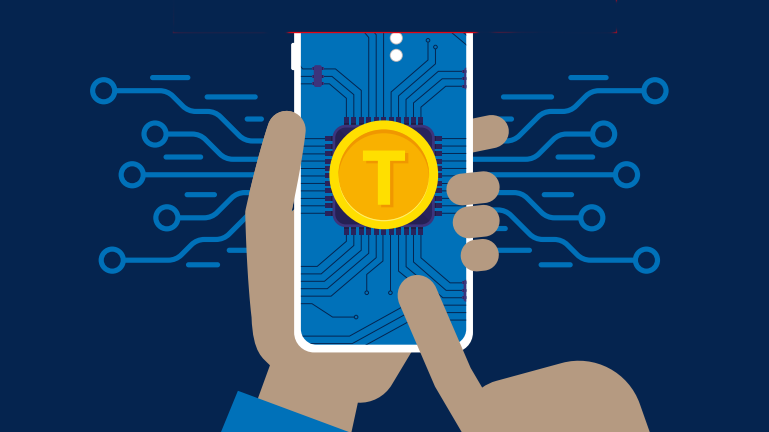Treasurers have a pressing need for fuller information and better integrated data and execution systems, and they need all this right in front of them on a single screen. In a recent webinar we discussed the role of application programming interfaces or APIs in this context: are APIs a total solution, part of the solution or a distraction? The answer is that a lot depends on who you are and your exact requirements, writes Ed Lopez, President of Calastone’s Global Money Market Services.
The world of treasury technology is a conundrum. Corporate treasurers handle vast sums of money on a daily basis, yet to do so they often rely on technology that is decades old – the spreadsheet, the telephone, email. We all have sophisticated digital apps on our smartphones that are fast, intuitive and capable of handling complexity, so why can’t we have something similar on the treasurer’s desk?
In truth, we could. But the solution is going to be found not so much in the treasury management system (TMS) or the corporate enterprise resource planning (ERP) system, but in the application programming interface (API) – a connecting technology that can allow systems to communicate and share data in a seamless way. Yet the API has been around in one form or another for a long time, so why is it suddenly flavour of the month? I recently discussed this with Ignacio Sanchez-Miret, CFO of Spanish toymaker Barrado, in a webinar hosted by Treasury Management International and Calastone.
But first a few words about APIs. At Calastone we recently put together a detailed white paper with the aim of demystifying APIs for treasurers. The way we see it is that – as far as the world of corporate finance is concerned – APIs are essential tools to enable the connectivity required to deliver up-to-date financial information, whether the status of an account, a transaction or an investment portfolio.
But what are the challenges of implementing APIs in existing treasury systems, and what are the costs? Ignacio Sanchez-Miret, who promotes the case for Fintechs and the move to digital solutions at the European Association of Corporate Treasurers (EACT), had this to say:
“Let’s start with where APIs can add value. Firstly there are bank reconciliations which are often a nightmare for treasuries. Next and a bit more complex is real-time monitoring of cash flows. And thirdly and most complex of all in terms of implementation, APIs are the only way to get real-time payments and the optimisation of working capital. Overall APIs can help to reduce the possibility of mistakes through manual input and increase operational efficiency.”
So the API offers speed and accuracy that treasurers often do not currently have. Many are still using separate host-to-host transaction and data exchange systems, or file exchange, or bank portals, which don’t operate in real time. Sometimes existing systems offer all you need, but what’s missing is integration.
“This is where you need to ask what you want to accomplish with an API,” said Sanchez-Miret. “Sometimes what you have already built is fine. Sometimes host-to-host communication is adequate. You will certainly have to invest time and resources into building or integrating an API, so you have to ask whether that investment is absolutely needed.”
The question of cost versus need is certainly one that treasurers must address. The promise of an API solution to one or more treasury problems may be attractive, but as anyone who has gone through a new TMS implementation process will know only too well, there can be hidden costs when dealing with new technology.
“Absolutely there are hidden costs, and the biggest hidden cost is time,” said Sanchez-Miret. “The basic application is often cheap, but the fact is first you are going to need dedicated IT support to help translate treasury needs into the language of digital technology. And whenever you need to connect anything new to an existing system you [often] find it takes more time than you thought, and that can be expensive.”
The question of cost is bound up with that of how many APIs an organisation is considering to implement, and for what kind of end result. In our API white paper we discussed the different kinds of API and the functionality to which they give access. Treasurers need to be clear-eyed about whether an API solution is fit for their particular purpose and also whether the API provider is trustworthy and experienced in terms of encryption standards or pre-testing of algorithms.
“If you want to add an API solution, don’t neglect to benchmark,” concluded Sanchez-Miret. “That is not so much about price, but about being aware of the alternatives in the market. And also give yourself time. Give yourself three months for pre-planning and at least another three to six months to implement a project of size.”
Technology is rarely a silver-bullet solution, and that applies to APIs. As APIs develop, become more standardised and therefore easier to integrate with existing systems the challenges may recede, but treasurers should always be ready to ask questions about the value a particular API can deliver and the experience of the provider. Multiple APIs from multiple organisations (banks, portals, TMS) linking to multiple partial solutions will always introduce more time, cost and risk. A single API connection to a tried and tested platform that provides connectivity to multiple systems is often a better option.
The API is already part of the treasury connectivity solution, but does not always offer the complete solution. At Calastone we have always said it is not connectivity that counts: it is the right connectivity.










